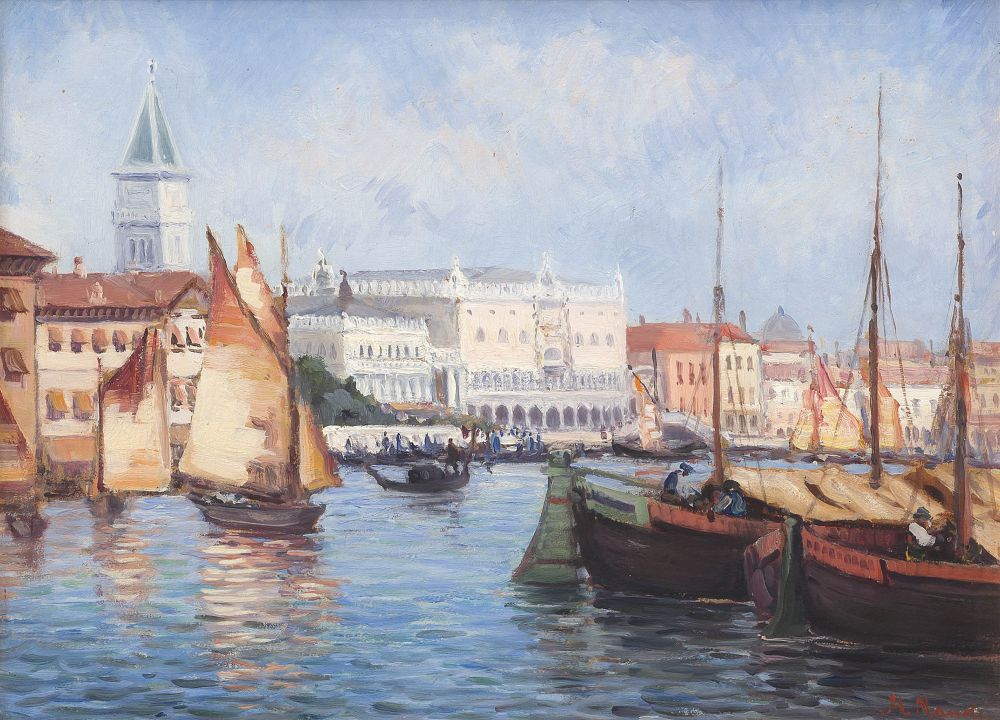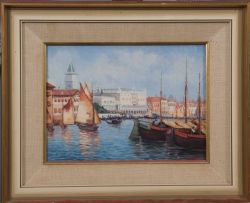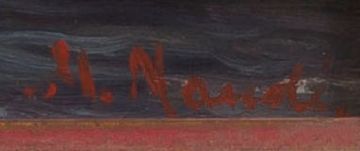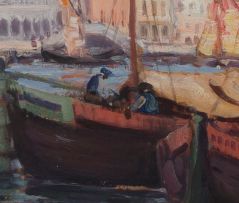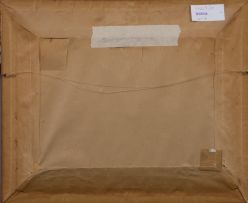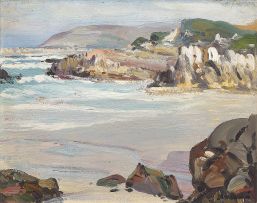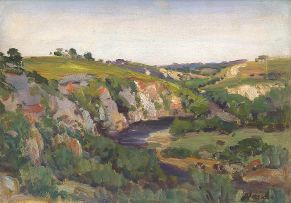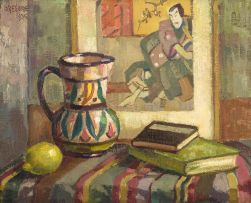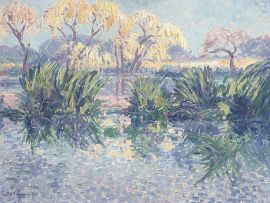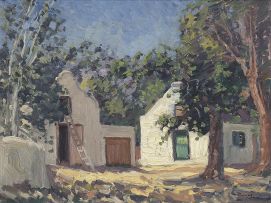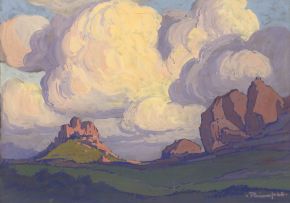Modern, Post-War and Contemporary Art, Decorative Arts and Jewellery
Live Auction, 7 October 2019
Modern, Post-War and Contemporary Art
Incl. Buyer's Premium & VAT
About this Item
signed
Notes
Having worked under Alphonse Legros at the Slade School in London, with Franz von Lenbach at the Kunst Academie in Munich, and alongside contemporary Barbizon painters near Fontainebleau, Hugo Naudé painted briefly in Italy before returning to Worcester in 1896. With the grave, melancholic light typical of the Barbizon School no doubt then in mind, it seems unimaginable that the present lot - an undaunted, dazzling depiction of Venice - can come from this period. It is more likely, rather, that the painting was made during a later, and by all accounts more high-spirited, trip to the city in 1913. Naudé was then acting as cicerone to his nephew, Philip du Toit, as well as NC Krone, on their Grand Tour of Europe. Perhaps leaving the youngsters to their own devices momentarily, and in order to show the Doge's Palace, glimpse the campanile, and allow opportunity to paint sunlight glinting off the Grand Canal, Naudé would have first sketched this scene from the bank opposite the Palazzo Giustinian.
Thanks to the artist's flashing swipes of teal and mauve for the water, amber and cream for the sails, purple for the shadowed gondolas, and glistening white for the famous colonnades, the painting has much more in common with the luminous, distinctive Cape Impressionism that the artist pioneered than it might to his original, gloomier, Barbizon influences. In any event, with this Venetian lot in mind, as well as the artist's iconic, mad-blooming Namaqualand vistas, his far-reaching views of the Matopos in then Rhodesia, and his affectionate, private interior scenes in Worcester, one is reminded not only of how widely-travelled was Naudé for an early-century South African artist, but how brilliantly varied was his tone, his subject, and his colour.
